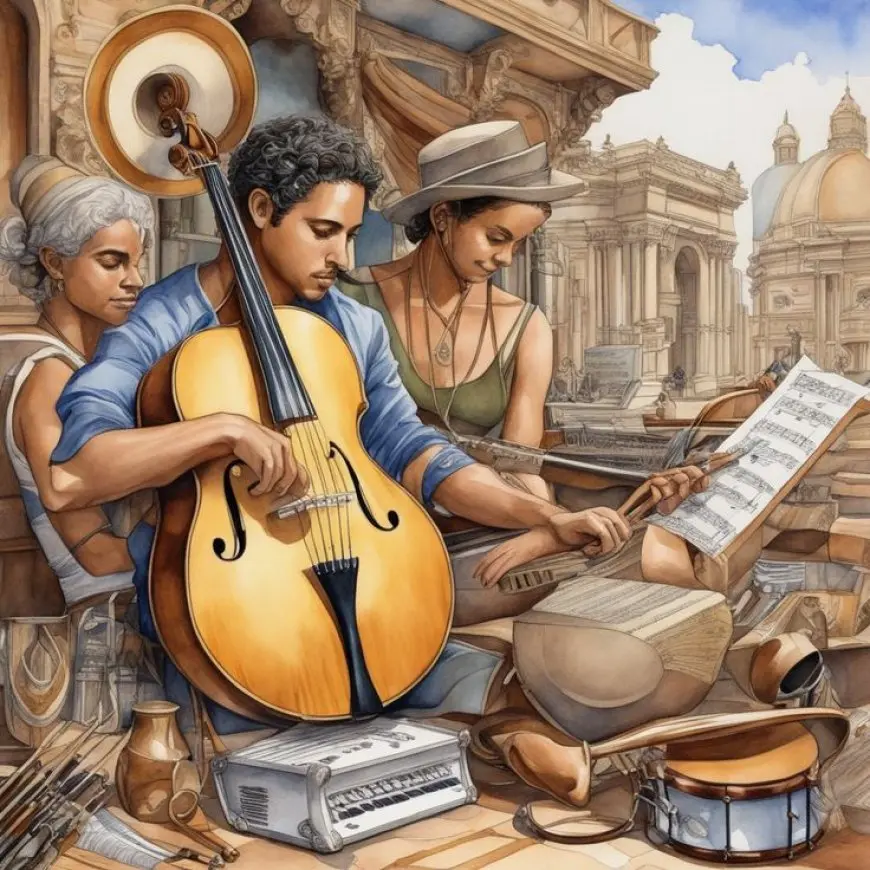The Impact of Social Issues on Art and Music
The Impact of Social Issues on Art and Music

Art and music have long served as powerful mediums for expressing societal concerns, challenging norms, and inspiring change. Social issues such as inequality, war, climate change, and civil rights movements have profoundly influenced creative expression, giving rise to works that reflect, critique, and shape cultural and political landscapes. The interplay between social issues and creative mediums demonstrates the enduring ability of art and music to not only reflect the times but also to provoke thought and inspire action.
Art as a Mirror of Society
Throughout history, artists have used their work to reflect the challenges and injustices of their time. During the Renaissance, for example, art often depicted religious and political power structures, subtly critiquing or reinforcing societal norms. In the twentieth century, movements like Dada and Surrealism emerged as direct responses to the devastation of war and political upheaval.
Modern and contemporary artists, such as Banksy and Ai Weiwei, continue this tradition by addressing issues like consumerism, freedom of expression, and migration. Their provocative pieces not only highlight these problems but also create spaces for dialogue and activism.
Art also serves as a vehicle for marginalized voices. Movements like the Harlem Renaissance allowed African American artists to explore themes of racial identity, pride, and resilience, pushing back against systemic discrimination through a creative lens.
Music as a Catalyst for Change
Music, like visual art, has been deeply intertwined with social movements. In times of struggle and upheaval, it has offered solace, unity, and a rallying cry for change. Folk music played a pivotal role in the American civil rights movement, with songs like "We Shall Overcome" becoming anthems of hope and solidarity. Similarly, reggae music, popularized by artists like Bob Marley, carried messages of resistance, unity, and love that resonated globally.
In the punk rock era, bands like The Clash used their platform to critique capitalism, imperialism, and inequality. Rap and hip-hop emerged as powerful genres for highlighting systemic racism, police brutality, and urban struggles, with artists like Public Enemy and Kendrick Lamar creating works that are both deeply personal and politically charged.
Pop and mainstream artists have also joined the conversation, using their reach to bring attention to pressing social issues. Beyoncé’s Lemonade and Childish Gambino’s “This Is America” are prime examples of music that fuses artistry with poignant social commentary.
The Role of Technology in Amplifying Voices
In the digital age, social issues and creative expression have become more interconnected than ever. Social media platforms allow artists and musicians to share their work instantly with global audiences, amplifying the reach of their messages. Crowdfunding and streaming platforms have also democratized access to art and music, enabling creators from diverse backgrounds to address social issues without relying on traditional gatekeepers.
Movements like #BlackLivesMatter and climate activism have inspired a surge in art and music that addresses these causes. From murals painted during protests to songs released in solidarity, technology has ensured that these creative expressions resonate widely and contribute to the collective consciousness.
The Dual Role of Art and Music
Art and music not only reflect societal concerns but also play a proactive role in shaping public opinion and fostering empathy. By telling human stories and evoking emotions, they can challenge apathy and ignorance, urging audiences to confront uncomfortable truths and take action.
For instance, documentaries that incorporate striking visual art or evocative soundtracks can make complex social issues more accessible and compelling. Charity concerts, benefit albums, and art auctions have also demonstrated the potential of creative mediums to fundraise and directly support social causes.
The Enduring Influence
The connection between social issues and art and music underscores the transformative power of creative expression. By capturing the struggles, hopes, and aspirations of societies, these mediums become more than entertainment; they become tools for education, resistance, and change. As long as social issues persist, artists and musicians will continue to use their talents to shed light on injustice and inspire a better world.







